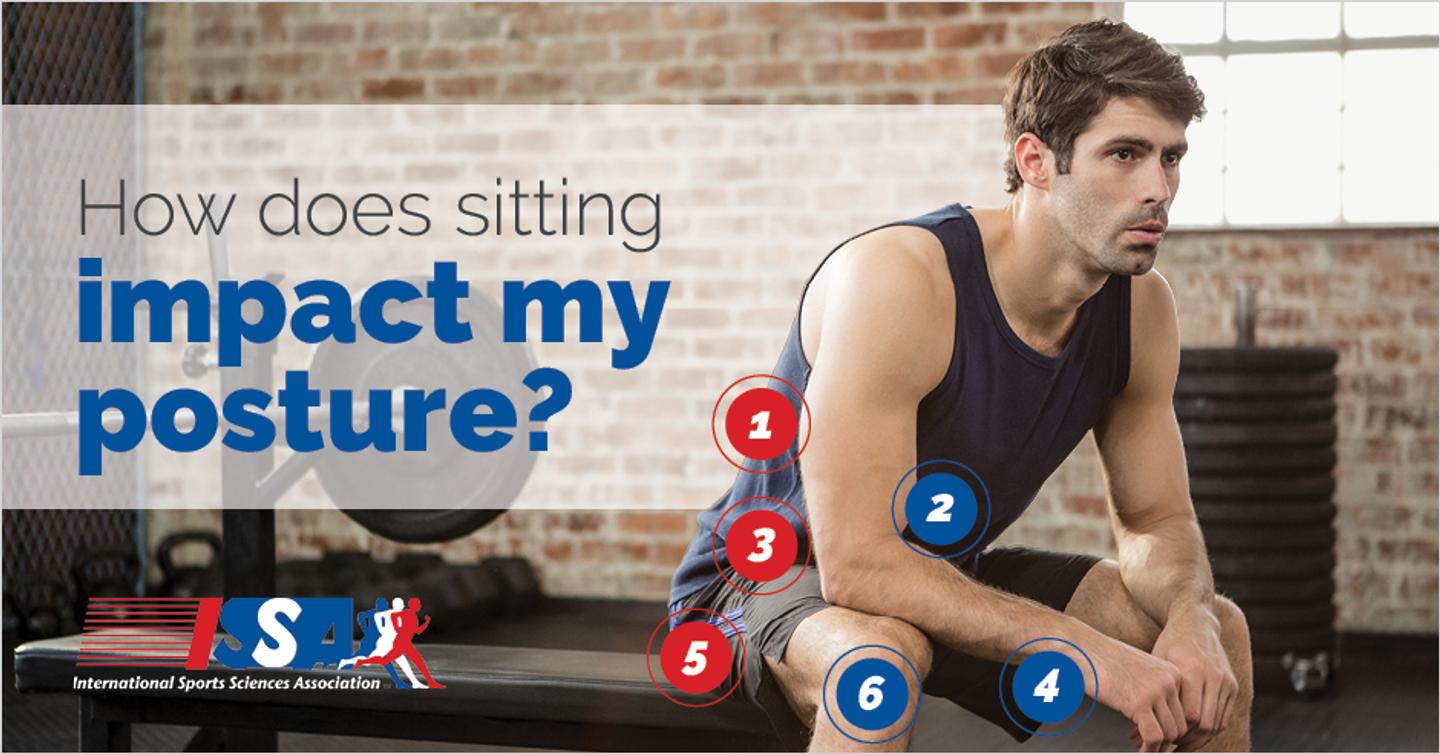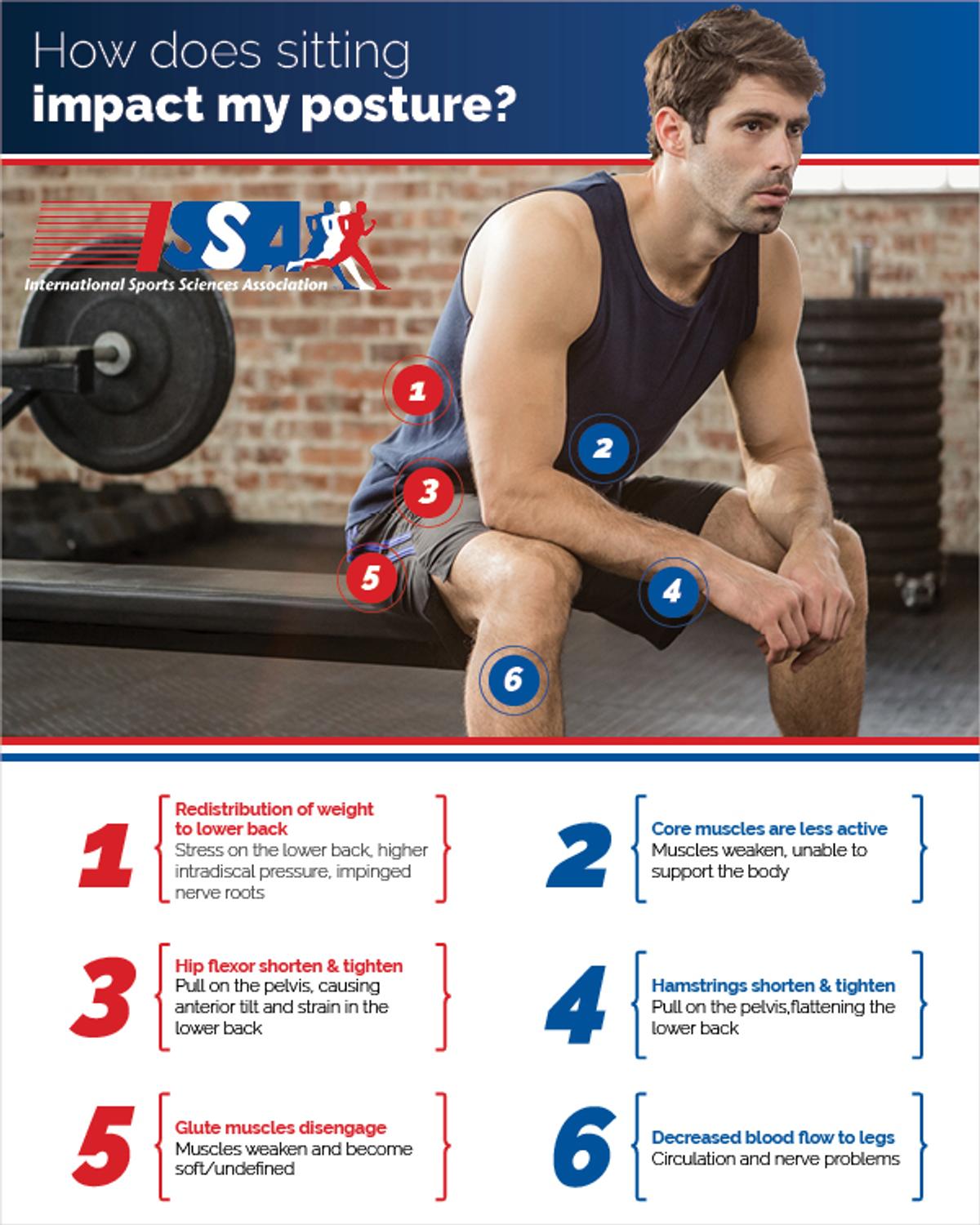
How does sitting impact my posture?
Reading Time: 2 minutes 60 seconds
BY: ISSA
DATE: 2018-08-14
What Does Sitting Do to My Posture?
Sitting is something we do every day, whether it's at the kitchen table, on the couch, at a desk, or even during your commute. It is so ingrained in our routines that it's easy to not notice it. In fact, so many people- especially clients- have never thought of "sitting" as dangerous. Sitting might be the cause for pain and movement dysfunction for you and your clients. In this article, we explore how sitting damages posture and what can be done about it. We also have a sharable document you can give to your clients as an education piece.
People often think, "If sitting is harmful, why does my back feel so much better when I sit down?" It makes sense. You're making dinner and your back starts to hurt after you've been standing, so you head straight to the couch afterwards to relax for the evening. Because clients feel the pain while standing, it's easy to assume that standing is the cause of the problem. So, let's take a look at how you can explain all of these concepts to your client.
Spinal Posture
Your spine is a main component of your posture. It supports the weight of your upper body and serves as a major connection point for many of the muscles in your back, chest, and core. These strong muscles in your back keep your vertebral discs appropriately stacked and keep the natural curves of your spine in place. A properly aligned spine keeps the body erect and moving smoothly.
What Happens When You Sit
In a standing position, your bodyweight is evenly balanced and all of the muscles are engaged to keep you upright and mobile. This all changes when you settle into a chair. Sitting impacts your posture in a variety of ways, some of which include the following:
Glute muscles are no longer engaged
Core muscles are less active
Hip flexors and hamstrings shorten
Weight redistributes to lower back
There's decreased blood flow to legs
Your body isn't moving as much, so it needs fewer muscles, even with a good seated posture. This is fine for a short period of time, but repeated and extended sessions of sitting can cause these changes to become problems. Especially when you consider that good posture usually doesn't last long and poor habits start showing up, such as:
Crossing legs
Leaning onto one elbow or the other
Head and shoulders rounding forward
Sinking the lower back into the seat
The Effects of Sitting
As your body becomes accustomed to a seated position you'll really start to notice how sitting impacts your posture. Your shortened hip flexors and hamstrings begin to tighten, causing irregularities in your standing and walking postures. Your back muscles also stiffen and weaken from lack of use, and your core loses its ability to keep everything drawn together.
The inefficiency of these muscles causes your body to shift more weight into your spine while you're seated. Because you're slouching, the weight that your upper back generally holds gets dumped into your lower back, overloading the vertebral discs and shifting the curvature on your spine. The pressure builds between these lowers discs and the muscles strain to accommodate the altered curve.
You'll most likely notice these problems as low-back pain when you stand up because your back muscles strain even more when your core isn't strong enough to properly hold everything in place. Then, when you sit down all of the muscles relax back to their now dysfunctional positions and seem to alleviate the pain. This is why you think standing is what causes the problem.
Don't Let Sitting Impact Posture
It is unrealistic for most people to avoid sitting for their entire day, but you can find ways to balance out some of the negative effects. Challenge yourself to focus on your posture and find new ways to keep your muscles active:
Practice proper posture whenever you are seated
Set reminders to get up and walk around
Consider using a standing desk
Get active after work rather than heading straight for the couch
